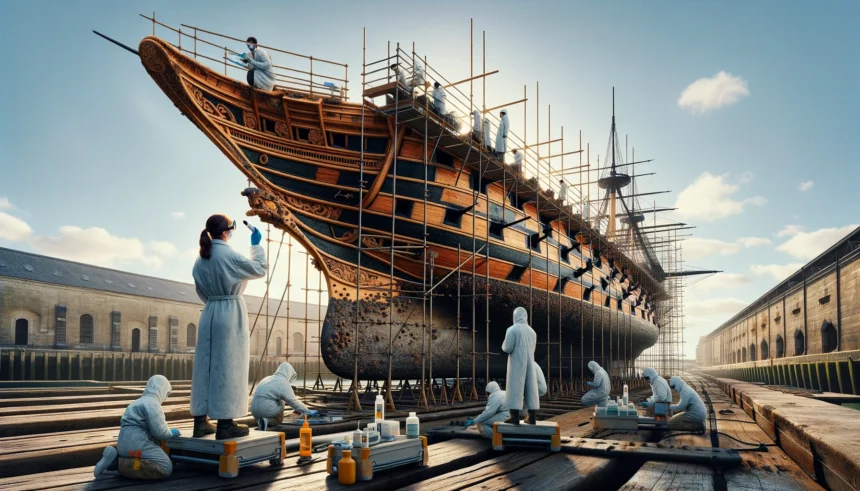In an ambitious conservation project, scientists are applying nanotechnology to preserve HMS Victory, the historic flagship of Vice Admiral Lord Nelson, ensuring its survival for future generations. Stationed in Portsmouth, this iconic 18th-century vessel has faced significant deterioration due to fungus and the invasive deathwatch beetle.
The University of Southampton, alongside the National Museum of the Royal Navy, has embarked on a detailed conservation plan that aims to keep the ship weatherproof and watertight for at least another 50 years. Rachel Triggs, an engineering consultant from the University of Southampton, explained that nanotechnology involves extremely small technologies that are now being applied to materials like wood and historic artifacts to prevent decay.
“HMS Victory isn’t just a ship; it’s a piece of history I’ve shared with my family. It’s thrilling to be part of a project that will extend its life,” Triggs shared, reflecting her personal connection to the ship.
HMS Victory is renowned for its robustness and historical significance, having survived six battles over a 40-year naval career. The conservation project, which is currently in its initial phase, involves significant scaffolding and will eventually expand to the ship’s outer edges, including the mast and rigging.
Jenna Marie Taylor, the principal conservator of objects at the National Museum of the Royal Navy, highlighted the project’s complexity and duration: “This is a large undertaking that will span around 15 years, involving many specialists and teams. We’re hopeful that our combined efforts will secure the ship’s future.”
This extensive project not only preserves an important historical artifact but also showcases the innovative use of Modern technology in heritage conservation.
















